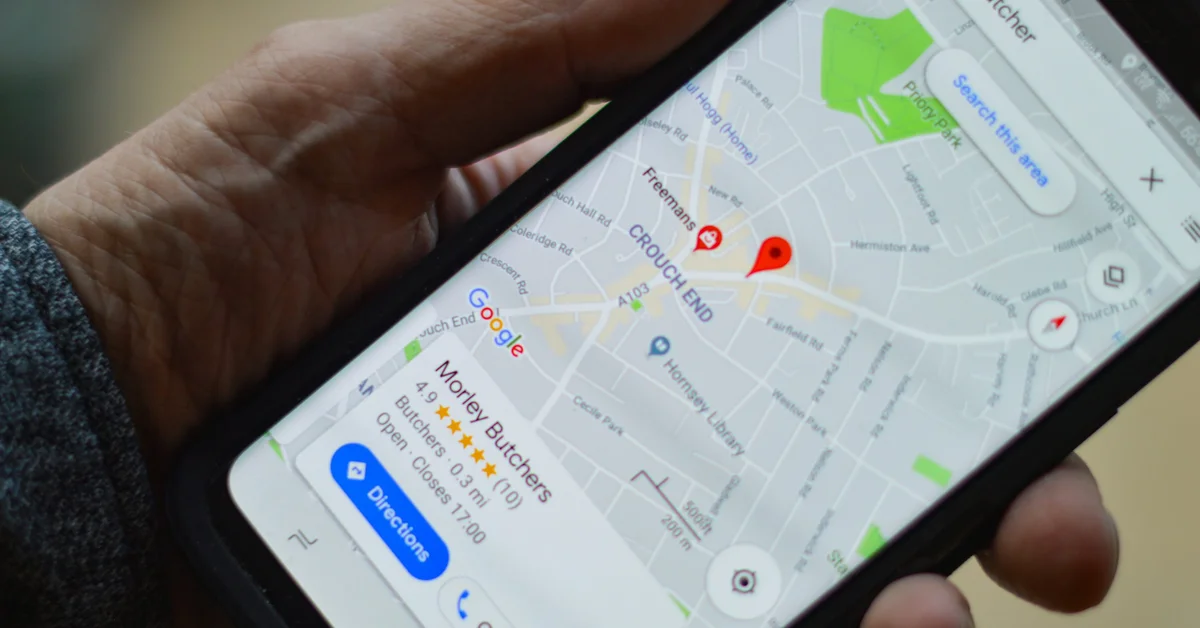The Ultimate Guide to Barnacle SEO in 2025

Harnessing the power of barnacle SEO can be a game changer for businesses looking to enhance their online visibility… Much like the way barnacles thrive by attaching to larger vessels, companies can leverage established web domains to gain traction in search results. This unique strategy allows smaller businesses to improve traffic to their sites by capitalizing on the authority of more prominent platforms.
Understanding how barnacle SEO diverges from traditional SEO is crucial for any marketer. While traditional efforts often center around identifying lower-competition keywords, barnacle SEO flips the script. It encourages businesses to focus on competitive keywords and exploit external platforms that already rank well. This approach allows businesses to be where their potential customers are searching, making it a smart tactic in today’s digital landscape.
In this article, we will explore effective barnacle SEO techniques that can propel your business forward, regardless of its size. Whether you’re a small enterprise or a well-established company, there’s something to be gained from this innovative approach.
The Basics of Barnacle SEO: What You Need to Know
Barnacle SEO is not your typical search engine optimization.. It’s more about attaching your content onto the platforms that already have good authority and visibility. Think of it as riding the wave created by bigger sites. They have trust and traffic — you can borrow some of that.
You might have noticed some companies gaining traction not by optimizing their websites. They show up on sites like Google Maps, Yelp, or even social media channels. That’s barnacle SEO in action. By positioning yourself on these platforms, you get to tap into their audience and enhance your chances of being seen..
Here are a few key points to keep in mind:
- Focus on high-authority sites: The better the site’s credibility, the more you benefit.
- Engage with local listings: These can boost your visibility especially if you run a local business.
- Use social media: Posting relevant content on platforms where your audience hangs out can draw attention.
The beauty of barnacle SEO lies in its simplicity. You don’t always have to create everything from scratch. Instead, find where your audience is active, and make your presence felt. This strategy saves time and gives you a shot at appearing in searches where you might otherwise struggle.
Building relationships with these high-authority sites can push your brand forward. It might seem like a daunting task, but don’t worry. Start small. Reach out. The worst that can happen is you don’t get a response. And if you do? That’s a win.
Keep in mind, barnacle SEO is not a one-and-done method. Regular check-ins and updates ensure you still get the exposure you seek. Over time, you’ll notice the positive impact on your visibility.
Barnacle SEO vs. Traditional SEO: Key Differences
You might be asking yourself how barnacle SEO stacks up against traditional SEO. It’s a fair question. Both have their place in the digital landscape, but they operate differently. Understanding these differences can help you choose the right strategy for your business.
Traditional SEO focuses on improving a website’s visibility in search engine results. You optimize your site’s content, structure, and backlinks.. It’s a marathon, not a sprint. You need time, effort, and sometimes a bit of guesswork.
Barnacle SEO, on the other hand, is more immediate and tactical. Here’s how they differ:
- Approach: Traditional is about building. Barnacle is about borrowing.
- Timeframe: Traditional takes time to show results. Barnacle can deliver quicker visibility.
- Ownership: With traditional SEO, you control your site entirely. In barnacle, you rely on others’ platforms.
- Cost: Traditional SEO can require hefty investment in content and tools. Barnacle can often be more cost-effective.
Which one should you choose? It depends on your goals. If you want to build a strong, lasting presence, traditional SEO is key. If you want to grab attention quickly or reach a specific audience, barnacle could be the way to go.
The best strategy isn’t always an either-or situation. Many businesses find success using a blend of both. You can create quality content for your website while attaching yourself to high-traffic platforms. This dual approach can give your brand a boost and increase your visibility across multiple channels.
You might feel overwhelmed by the options. It’s okay. Take it step by step. Explore barnacle SEO, and watch how it can complement your traditional efforts. The digital world is vast, but with the right strategies, you can navigate it effectively.
Top Platforms for Barnacle SEO Success
You’re probably wondering where to focus your barnacle SEO efforts. It’s a good question. Certain platforms can really enhance your visibility and drive traffic to your brand. Let’s dig into some of the top platforms that can help you ride that wave of authority and reach.
- Google Business Profile: Claiming and optimizing your profile is a must. It puts you on the map, literally. Customers can find you easily when they search locally.
- Yelp: This platform is crucial for businesses in hospitality and services. Customers often turn to Yelp for reviews and recommendations.
- Facebook: It’s not for social interaction. You can use Facebook to engage with users and share content. Local events? Great way to connect with your community.
- LinkedIn: If you’re in B2B, this is your go-to platform.. Join groups and engage with industry content. It’s all about networking.
- Tripadvisor: Perfect for travel and hospitality businesses. Getting featured can significantly boost your reputation and visibility.
Engagement is key on these platforms. Simply setting up a profile isn’t enough. You need to interact, respond to reviews, and share useful content. Each like or comment can open doors.
You might think managing multiple profiles is a lot of work. It can be. Start by prioritizing. Choose a few platforms where your audience spends their time. This way, you can give each platform the attention it deserves.
Keep track of what works. Use metrics to gauge your success. Are you getting more inquiries from Google? Is engagement increasing on Facebook? Ad your strategies as necessary. The platforms you choose should align with your goals and audience.
Barnacle SEO isn’t about being present. It’s about making genuine connections and positioning yourself where it matters. Don’t hesitate to adapt and evolve your approach as you learn. This could be the game-changer for your visibility. Find the right combination and make barnacle SEO work for you.

How to Optimize Your Google Business Profile for Maximum Visibility
You want to better your Google Business Profile for better visibility. It’s one of the most effective tools in barnacle SEO. When optimized correctly, it can create a tremendous impact on your local search presence. Let’s break it down.
First off, make sure your business information is complete. This includes:
- Business name
- Address
- Phone number
- Website link
- Operating hours
Every detail matters here.. Inaccurate information can lead potential customers astray. You want them to find you easily.
Add quality images. Think of visuals as the friendly face of your business. Include photos of your location, products, and team. Look for engaging shots that showcase what you offer. Fresh images signal activity to Google as well. This can boost your ranking..
Encourage customer reviews. They’re essential for credibility. Responding to reviews shows you care. It builds trust in your brand. It’s a win-win. Positive reviews can sway decisions in your favor.
Post updates regularly. Share news about promotions or events. Let your audience know what’s happening. This keeps your profile active and engaging. You might even want to include offers or specials. Limited-time deals can attract quick interest.
Consider using posts to share content directly. Feature blog articles, videos, or tips that relate to your business. It drives engagement and helps keep your audience informed.
Don’t forget about local keywords. Use terms specific to your area and industry in your profile. This will help you appear in relevant searches.
Finally, monitor your insights. Google provides data on views, clicks, and calls. Analyze this information to see what’s working. Ad your strategies so. Keep refining your approach.
Optimizing your Google Business Profile might seem like a lot. Break it into steps. Start with the basics and build from there. Each small update counts. Your visibility can skyrocket with some focused attention.
Building Authority: Engaging with High-Ranking Websites
Building relationships with high-authority websites can help your brand shine. You might feel uncertain about where to start, but it’s simpler than you think. Reaching out for collaborations or mentions can work wonders for your visibility. Here’s what you can do:
- Identify relevant sites: Look for platforms and blogs that align with your niche.
- Build your network: Follow their content, engage with posts, and join conversations.
- Craft personalized messages: When contacting website owners, be genuine. Explain how your work relates.
Consider guest blogging. This can give you a chance to share your knowledge while linking back to your site. Remember, it’s not about getting a link; it’s about adding value to their audience.
Here’s how to approach it:
- Research sites with high traffic.
- Look for content gaps where you can contribute.
- Pitch ideas that solve their audience’s problems.
Another avenue is to engage on social media. Share insights from high-ranking websites. Tag them. This might encourage interaction, leading to potential partnerships later. Highlight their work in your posts too. Recognition can go a long way.
Forum participation can be beneficial as well. Find relevant communities and contribute.. Answer questions, share resources, and establish yourself as an expert. These communities often respect knowledgeable voices.
Staying consistent pays off. Over time, your efforts in relationship-building can lead to guest post opportunities, backlinks, and even mentions in their articles. It’s a slow burn but worth it.
Check your progress. Are you gaining followers? Are high-authority websites engaging with your content? Keep adapting your strategy based on what resonates.
Don’t underestimate the power of connection. You never know where a simple outreach can lead. Dive in and start building authenticity within your niche. Your brand will grow along with your effort.

The Art of Guest Blogging: Expanding Your Reach
You know guest blogging can be a powerful tool. It’s all about sharing your insights while connecting with new audiences. It allows you to expand your reach beyond your own website. If crafted well, it opens doors and builds credibility.
Start by identifying the right platforms. Focus on blogs that align with your niche. Don’t settle for any site. Look for those that already have a loyal following. You want to ensure that your voice adds value to their audience.
When reaching out, personalize your messages. Generic emails are easy to spot. Show that you’ve done your homework. Mention specific posts you liked and how your content can complement theirs. It creates a genuine connection, making you stand out.
Here’s a simple list to guide your guest blogging efforts:
- Think about what unique insights you can provide.
- Research potential blogs and their audience.
- Craft a compelling pitch that outlines your ideas.
- Be clear on how your piece benefits their readers.
Once you land a guest spot, focus on writing valuable content. This is your chance to shine. Share insights, tips, or analyses that resonate. Include relevant links back to your site, but ensure they fit naturally within the context.
After publishing, promote your piece on your channels. Share it on social media. Engage with comments and inquiries. This interaction helps deepen connections with new readers. It’s not about one blog — it’s about building lasting relationships.
Watch for the impact on your own site. Are you gaining new followers? Are people engaging with your other content? Those metrics can guide your next steps in the world of guest blogging.
Don’t be afraid to reach out. You might hit a few walls, but that’s part of the game. Keep trying. Each effort can get you closer to the audience that’s waiting for your insights. And who knows? A simple guest post now could lead to even bigger opportunities down the road.
Crafting Expert Pitches: Getting Featured by Journalists
Building relationships with journalists can seem intimidating, but it doesn’t have to be. You’ve got valuable insights and expertise to share. Getting featured can not only enhance your visibility but also boost your credibility. Let’s explore how you can effectively pitch your ideas to journalists.
Identify the right journalists. Look for those who cover topics related to your field. Spend some time reading their articles. Understand their interests and writing style. This helps you tailor your approach.
Crafting a personalized pitch is crucial. Avoid templates that feel robotic. You want your email to feel human. It should resonate. Start with a friendly introduction. Mention why you admire their work. Then, highlight what you can offer. Whether it’s expertise on a trending topic or unique data, make it clear why your information matters.
Here’s a simple outline for your pitch:
- Subject line: Keep it catchy but clear. Avoid clickbait.
- Introduction: Briefly introduce yourself. Share your credentials.
- Value proposition: Explain what you can offer them. It could be an opinion piece or quoting your insights.
- Conclusion: Express appreciation for their time. Offer to follow up.
Follow up if you don’t hear back. Journalists receive dozens of emails daily. A gentle reminder could be the nudge they need. Keep it light. No pressure. Your goal is to build rapport.
Share your insights on social media too. Journalists often browse platforms like Twitter for fresh ideas. Tag them, and engage with their content. This increases the chances of them noticing you. Just don’t overdo it.
Don’t forget networking events. Attend industry-related events and get to know journalists face-to-face. A friendly chat can lead to opportunities later on.
Lastly, be patient. Building these relationships takes time. Keep refining your approach based on what works. Keep that passion burning. Every pitch is a step closer to getting your voice heard.

Social Media as a Barnacle SEO Tool: Choosing the Right Platforms
You might be wondering how to use social media in your barnacle SEO efforts. It’s simpler than you think. Choosing the right platforms can make all the difference. Not all social networks will suit your brand, but understanding where your audience hangs out is key.
Start with these popular platforms:
- Facebook: Great for local engagement and sharing updates.
- Instagram: Visual storytelling can showcase what you offer..
- Twitter: Perfect for quick interactions and sharing news.
- LinkedIn: Ideal for B2B connections and professional networking.
- TikTok: If your audience skews younger, consider short, engaging videos.
Selecting platforms based on your audience is crucial. Where do they spend their time? You don’t want to stretch yourself too thin. Pick two or three to focus on initially. Dive deep and engage with users there.
Engagement is what matters most. Simply posting isn’t enough. You need to interact. Respond to comments. Share user-generated content. Create polls or ask questions. Your audience wants to feel heard. Building a community fosters loyalty.
You might feel tempted to create content for every platform at once. Don’t. Focus on quality over quantity. Craft messages that resonate with the specific audience on each platform. A post on LinkedIn should differ from one on Instagram. Adapt your tone and style based on where you’re posting.
Track engagement metrics on each platform. Are you gaining followers? What type of content resonates? These insights can help you fine-tune your strategy. It’s about experimenting and learning.
Keep an eye on trends. Social media evolves rapidly. Just because something works today doesn’t mean it will tomorrow. Stay informed and be ready to pivot. Flexibility can lead to new opportunities.
Start building your social media presence today. It could become an essential part of your barnacle SEO strategy.